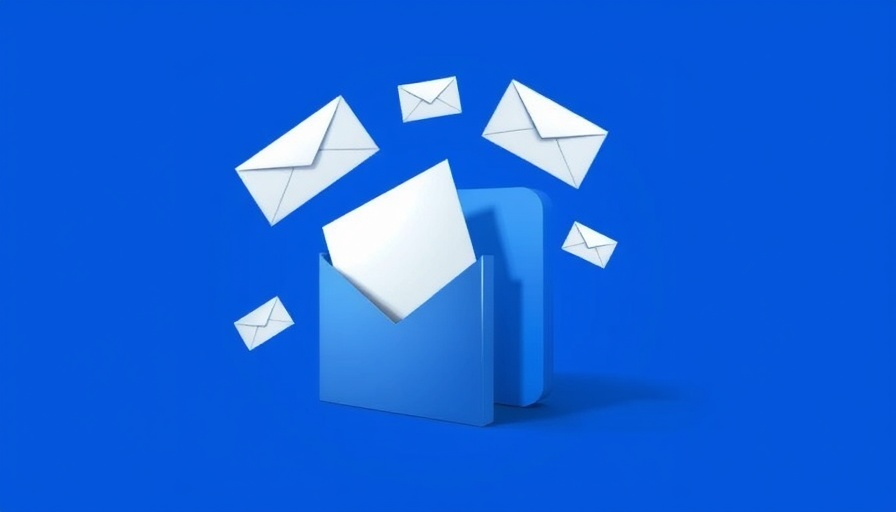
Unlocking Email Efficiency: A Game Changer for Digital Nomads
Email communication remains a vital part of any professional's toolkit, especially for digital nomads who often juggle multiple projects and clients. The challenge often lies in crafting personalized messages that resonate without feeling robotic. Enter mail merge, a powerful tool that enables you to send customized mass emails effortlessly. With a few simple steps, you can save time while ensuring your communication is direct and personal.
The Basics of Mail Merge: Understanding the Process
At its core, mail merge combines a standard email template with a list of contacts, allowing for personalized details like names and specific messages. This method ensures that each recipient feels the message is tailored specifically to them, fostering a connection that generic blasts can never achieve. The typical tools used for this process include Microsoft Word, Google Sheets, and email platforms like Gmail.
Why It Matters for Remote Workers
Digital nomads often find themselves in varying time zones and cultural contexts, making personalized communication even more critical. Mail merge not only offers efficiency but enhances engagement by addressing recipients personally. When sending updates, promotional content, or simply checking in, a personalized message can lead to higher response rates and better relationships.
Step-by-Step: How to Set Up a Mail Merge
To get started, follow these easy steps:
- Create a Contact List: Use Google Sheets or Excel to compile your recipient data, including names, emails, and relevant details you want to personalize.
- Draft Your Email: Write your email template, remembering to leave placeholders for the personalized fields, such as the recipient's name.
- Merge the Data: Use a tool like Google Docs to open your email template and link it with your contact list. Google Sheets offers a built-in feature to manage this seamless integration.
- Send a Test Email: Verify all merges are correct by sending a test email to yourself or a trusted colleague before going live.
- Hit Send! Once everything checks out, send your personalized email to your entire list, all at once but still uniquely tailored.
Best Practices for Email Marketing as a Digital Nomad
Embracing mail merge can vastly improve your email marketing strategy. Here are some best practices:
- Segment Your Audience: Grouping your contacts based on interests or demographics can allow for even more targeted messaging, enhancing engagement.
- Use A/B Testing: Experiment with different email subject lines and content to see what resonates best with your audience.
- Follow Up: Don't underestimate the power of follow-ups. A quick note can reinforce the connection and encourage responses.
Potential Pitfalls and How to Avoid Them
While mail merge is advantageous, it’s not without its challenges. Common pitfalls include:
- Over-Personalization: Don’t go overboard with personal touches, which can make messages appear insincere. Keep it genuine.
- Ignoring Spam Regulations: Ensure compliance with laws such as the CAN-SPAM Act to avoid penalties—always include an opt-out option.
- Neglecting Mobile Optimization: Many recipients will read emails on mobile devices, so make sure your templates are responsive and visually appealing.
Final Thoughts: Embrace the Power of Mail Merge
Mail merge is more than just a tool; it's a strategy for efficient communication and relationship building. For digital nomads, leveraging this technique can streamline your outreach efforts, making way for meaningful connections no matter where you are in the world. By following the steps, avoiding common pitfalls, and constantly refining your approach, you’ll find that your email outreach not only becomes easier but also more effective.
 Add Row
Add Row  Add
Add 




Write A Comment